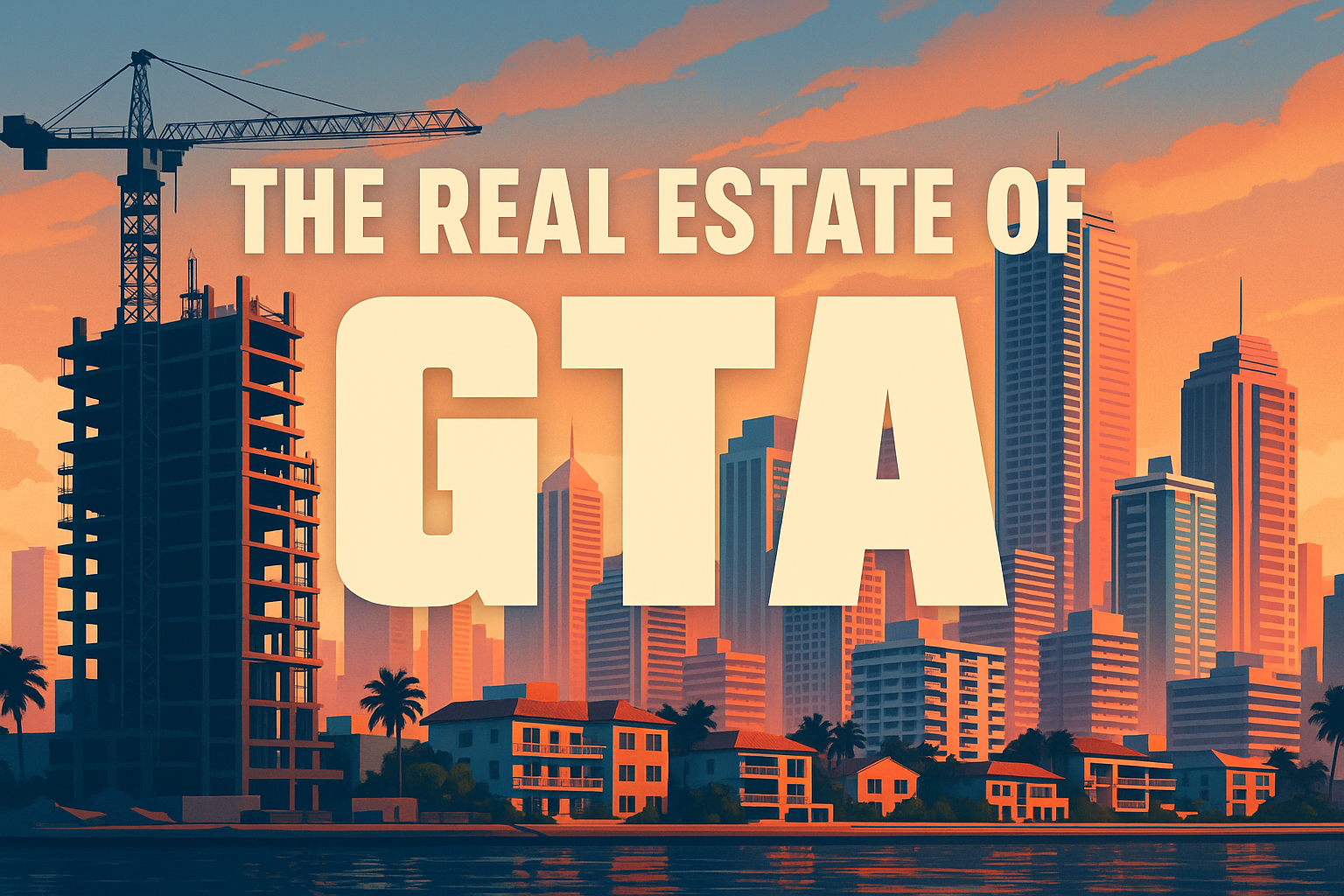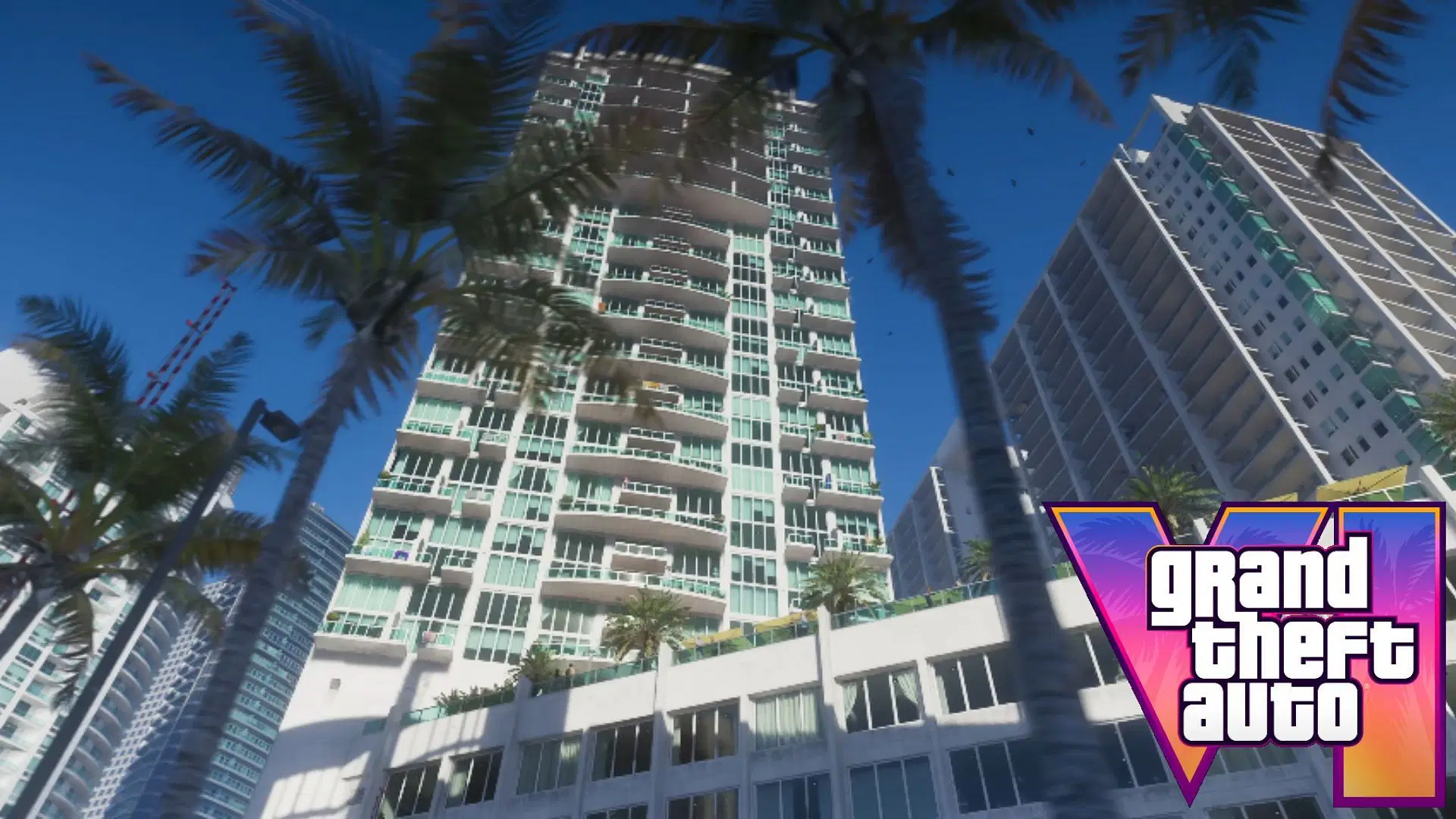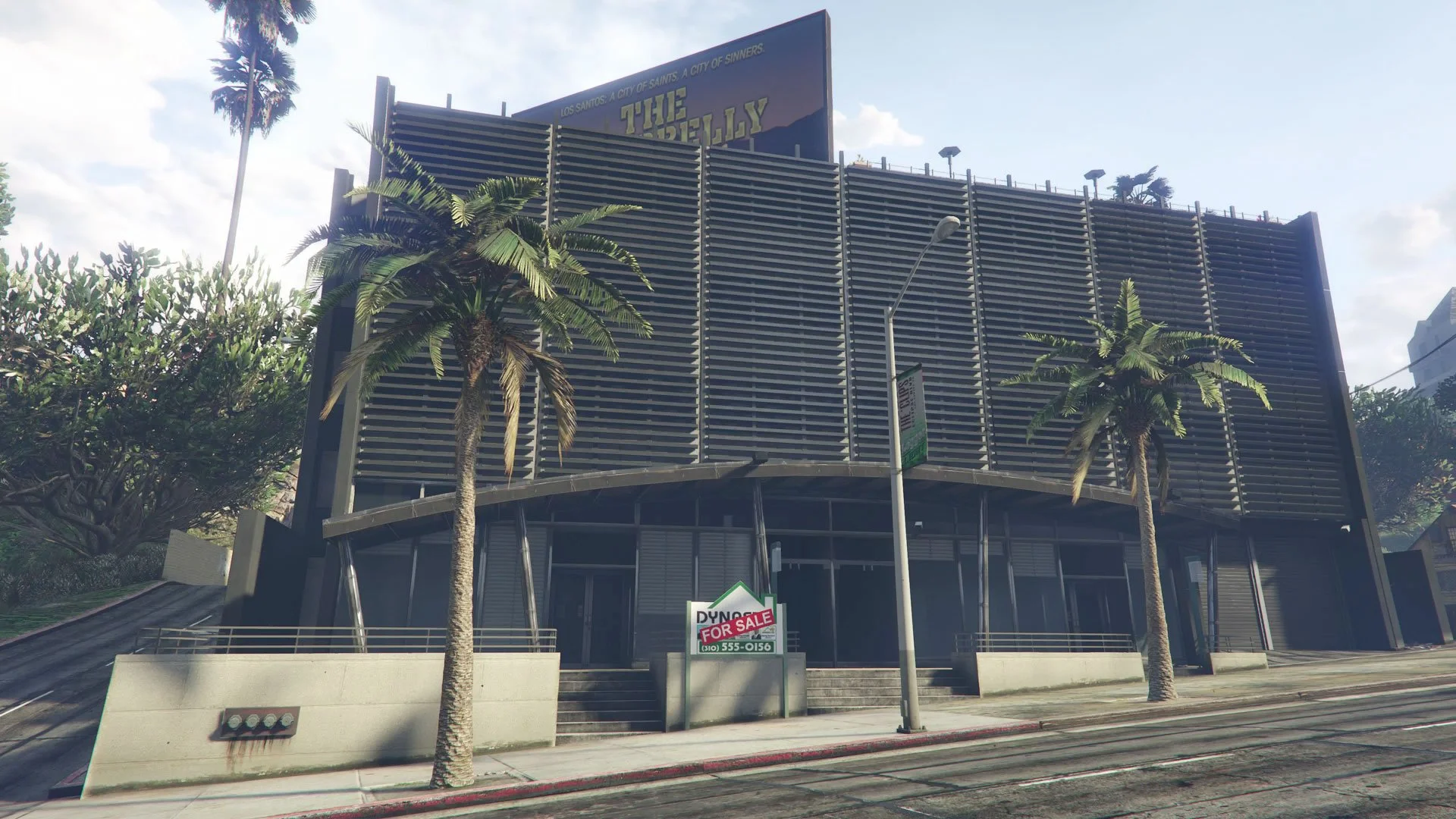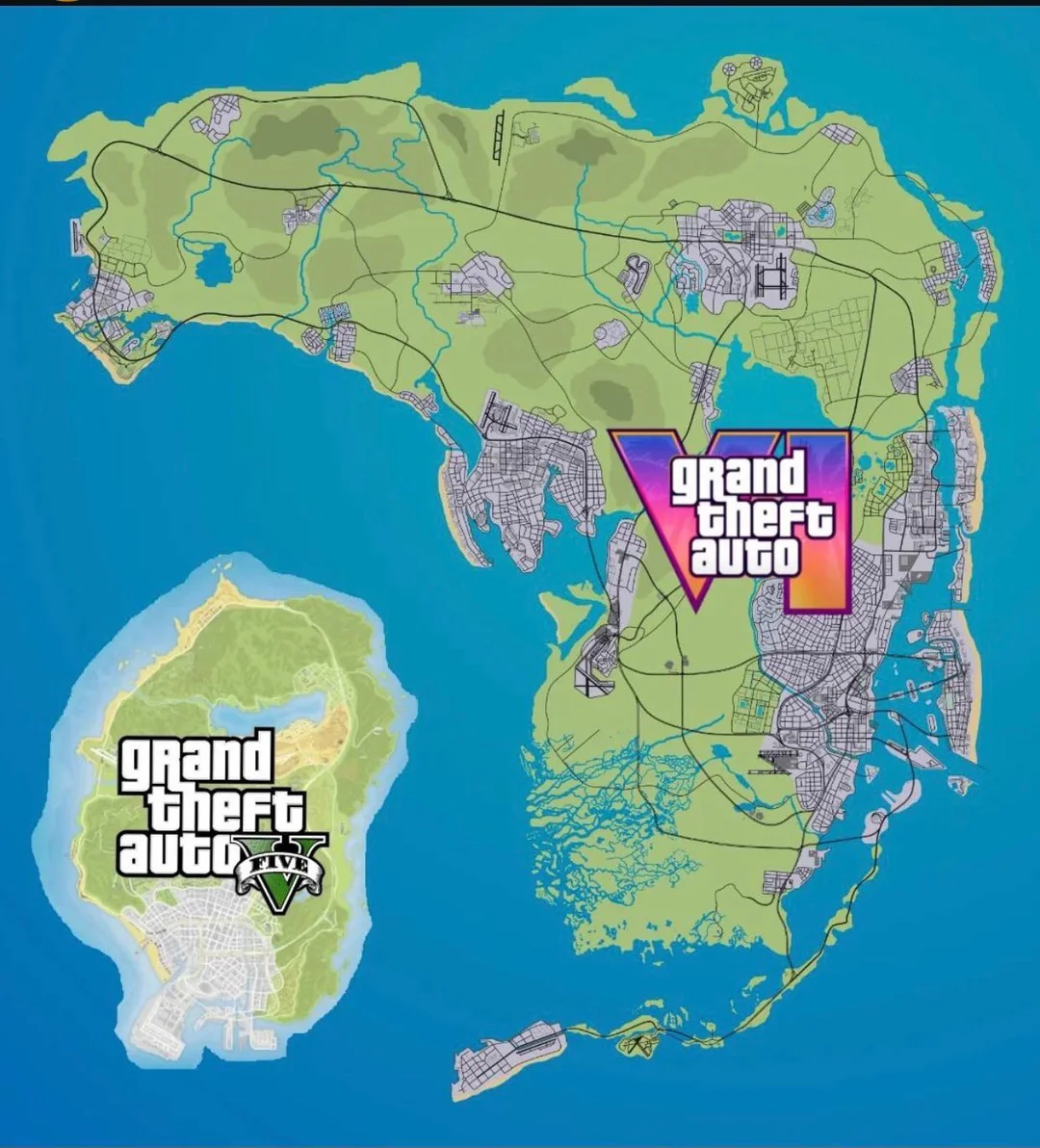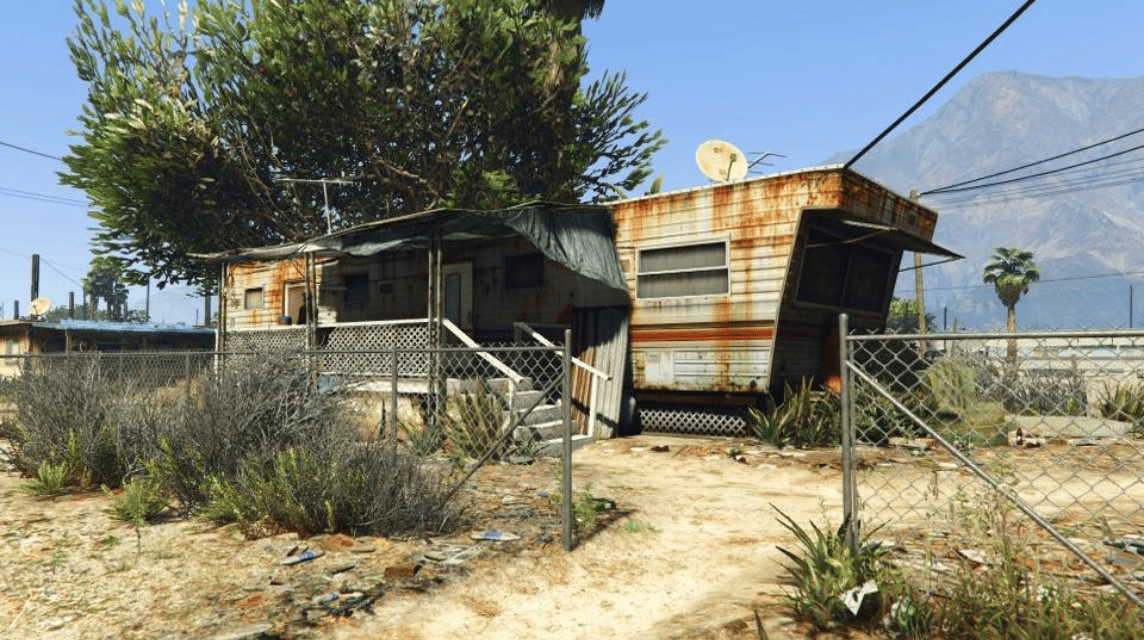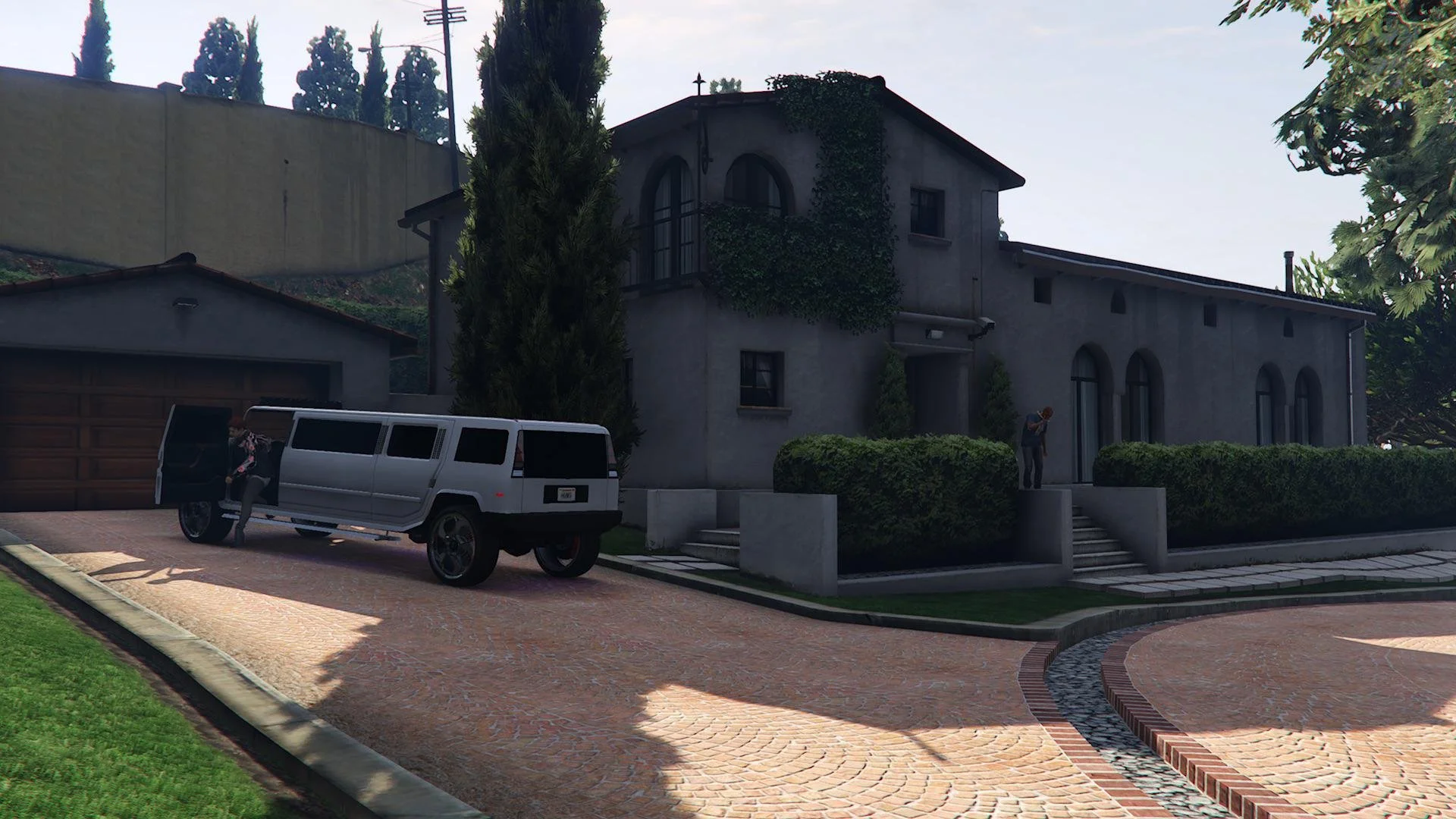Conquer the City: Insider Tips for Dominating Real Estate in Grand Theft Auto
Introduction: Navigating the World of Real Estate in Grand Theft Auto
The Grand Theft Auto (GTA) series, a trailblazer in the realm of action-adventure games, has captivated millions with its blend of open-world exploration, narrative depth, and unparalleled freedom. Since its inception in 1997, GTA has revolutionized not just the gaming industry, but also how players interact with the virtual world. Among its most intriguing aspects is the real estate mechanic, a feature that has evolved significantly over the years, reflecting the series' growth and the increasing complexity of its gameplay.
In the early days of the GTA series, the concept of real estate was rudimentary, often limited to basic safehouses or garages. These early iterations laid the groundwork for what would become a central gameplay element in later titles. It wasn't just about having a place to save your game or store vehicles anymore; real estate in GTA became a dynamic, engaging, and profitable aspect of the game's world.
The evolution of the real estate mechanic mirrors the series' overall development. From the top-down perspective of the original Grand Theft Auto to the sprawling, immersive 3D worlds of GTA III and its successors, each game brought new dimensions to property ownership. In GTA Vice City, players first tasted the thrill of buying properties, opening the door to new missions and income sources. This feature was not just an add-on but an integral part of the game's narrative and progression, intertwining the player's journey with the virtual city's economy.
GTA San Andreas expanded this concept further, introducing a variety of properties, including homes, businesses, and even clandestine establishments, each with unique benefits and challenges. The sense of progression, from a small-time criminal to a powerful tycoon, was palpable. Players were not just buying properties; they were investing in their character's future, impacting their influence and standing within the game's world.
With GTA IV, the series took a slight detour, focusing more on narrative depth and character development. The real estate aspect was subdued, yet it set the stage for the most ambitious iteration yet – GTA V. Here, real estate became more than a mechanic; it was a statement. Players could purchase a variety of properties, from modest apartments to lavish mansions, each reflecting their success in the game. The introduction of GTA Online took this to another level, allowing players to compete, collaborate, and show off their real estate prowess in a shared online world.
The expectation for GTA VI is immense. As the series moves forward, the real estate mechanic is anticipated to be more intricate and integrated than ever before. Rumors and speculations suggest a world where real estate not only offers financial benefits and mission opportunities but also plays a crucial role in shaping the game's narrative and player interactions.
Beyond the gameplay, the real estate in GTA reflects the series' dedication to creating worlds that mirror and satirize real life. The properties, their locations, and their styles are not just virtual constructs; they are a commentary on society, economics, and culture. From the opulent mansions echoing Hollywood's extravagance to the rundown buildings symbolizing urban decay, each property tells a story, contributing to the rich tapestry that is the GTA universe.
In summary, the real estate mechanic in GTA is more than a feature; it's a journey through the series' evolution, a reflection of its ambition and ingenuity. It offers players a chance to experience the thrill of property management, investment, and progression, all within the captivating world of Grand Theft Auto. As we delve deeper into each game and uncover the layers of this fascinating mechanic, we understand not just the games themselves, but also the ingenuity behind one of the most successful franchises in gaming history.
Statistical Insights: The Real Estate Mechanics in the Grand Theft Auto Franchise
The Grand Theft Auto (GTA) series has been a juggernaut in the gaming industry, with its real estate mechanics playing a pivotal role in shaping player experiences and the economic landscape of its virtual worlds. Let's dive into some statistical tidbits that highlight the impact and evolution of the real estate mechanics across the GTA franchise.
GTA Vice City: The Dawn of Property Ownership
Number of Properties Available: 8 significant properties.
Average Cost: Ranging from $1,000 to $120,000.
Income Generation: Up to $8,000 per day from owned assets.
This was the first GTA game to introduce property buying, where investments also unlocked new missions and opportunities.
GTA San Andreas: Diversification of Real Estate
Types of Properties: Included safe houses, garages, businesses, and unique establishments.
Total Properties: Over 30 properties spread across the map.
Customization: Introduction of interior customizations in certain properties.
Impact on Gameplay: Property ownership affected territorial control and gang influence.
GTA IV: A Shift in Focus
Properties for Safehouse Use Only: Limited interaction with real estate, focusing more on the narrative.
Safe Houses: 5 safehouses, tied to the game's progression rather than player choice.
This represented a more narrative-driven approach, with less emphasis on the real estate mechanic.
GTA V and GTA Online: The Real Estate Renaissance
GTA V Properties: Over 25 properties, including apartments, garages, and businesses.
GTA Online Expansion: Hundreds of properties, with regular updates adding more options.
Average Property Cost in GTA Online (As of 2023): Ranges from $25,000 to over $10 million for high-end properties.
Player Engagement: A significant percentage of in-game earnings in GTA Online is invested in real estate.
GTA V Revenue Boost: Real estate missions and activities contributed significantly to the in-game economy, extending the game's longevity and player engagement.
Anticipations for GTA VI
With GTA VI in development, expectations are high for an even more dynamic and interactive real estate market.
Predictions include more diverse property types, deeper management mechanics, and a direct impact on the game's narrative.
These statistics paint a vivid picture of how the real estate mechanics have grown in complexity and significance throughout the GTA series. From simple property purchases in Vice City to the elaborate and continually expanding options in GTA V and GTA Online, real estate has become a cornerstone of the gameplay experience. This evolution not only reflects the series' technological advancements but also its commitment to creating a rich, interactive world that mirrors and satirizes real-life economic dynamics.
The anticipation for GTA VI adds another layer of excitement. As players await the game's release, the speculation about how real estate will play into the new game's mechanics and narrative adds to the allure of what is already one of the most successful gaming franchises in history.
Rockstar’s first trailer confirms we’re headed back to a neon-drenched Vice City, now the commercial heart of the broader “state of Leonida,” and the skyline is bristling with half-finished condo towers, waterfront cranes, and sprawling swamp compounds that beg to be bought, flipped, or fought over. One of the new supporting characters, Boobie Ike, is already billed as a “local legend” who’s parlayed street hustling into “a legitimate empire spanning real estate, a strip club, and a recording studio,” hinting that property ownership will sit right alongside gun-running and heists as a core progression loop in GTA VI. Community sleuths parsing GTA VI’s trailer frame-by-frame have spotted signage for foreclosure auctions and influencers livestreaming inside luxury penthouses—fuel for speculation that the game will let you scoop up distressed assets, renovate them, then monetize everything from nightly rentals to nightclub revenue in real time. Add in Games Radar’s observation that brief clips of Lucia and Jason overseeing what looks like a bustling back-room operation evoke GTA Online’s CEO offices, and it’s easy to imagine a fully dynamic housing market where hurricanes, viral trends, and rival crews can spike (or tank) your portfolio overnight. In short, GTA VI doesn’t just promise bigger crimes—it teases the most sophisticated virtual real-estate sandbox Rockstar has attempted, one that could finally let players build a vice-empire literally “brick by brick.”
Real Estate Strategies for Maximum Profit in GTA
Real estate in the Grand Theft Auto series is not just a feature for immersion; it's a complex economic simulator that can lead to significant in-game wealth. Mastering real estate within GTA requires strategic thinking, market awareness, and a knack for timing. In this section, we delve into three key strategies that players can employ to maximize their profits through real estate investments in the GTA universe.
1. Strategic Investment and Diversification
In GTA, as in real life, putting all your eggs in one basket is rarely a good idea. Diversification is crucial for risk management and maximizing returns.
Understanding Property Types: Different types of properties (safe houses, businesses, special venues) offer various benefits and income streams. For example, in GTA V, investing in businesses like the Vanilla Unicorn strip club generates regular income, while properties like hangars and warehouses unlock new gameplay elements and missions.
Location Matters: Just like real-world real estate, location is key in GTA. Properties in high-traffic areas or central locations in the game map often yield higher returns, either through income or strategic advantage.
Market Timing: Buying properties when in-game events lower prices, and selling or leveraging them during peak periods can maximize returns. Keeping an eye on the in-game economy and events is crucial for this.
2. Utilizing Missions to Boost Property Value
In the GTA series, certain missions, once completed, can significantly increase the value or income of properties.
Mission-Related Property Value Increase: For instance, in GTA Vice City, completing missions linked to assets increases their income generation. In GTA V, certain heist outcomes can influence market prices, affecting property values and business incomes.
Active Engagement: Actively participating in missions linked to your properties, and strategically choosing missions that will positively impact your real estate holdings can be a lucrative approach.
3. Exploiting Online Real Estate Opportunities
GTA Online offers a dynamic real estate market with continuous updates, adding new properties and opportunities.
Market Fluctuations: The online environment is more volatile, with prices and opportunities changing frequently. Staying active and responsive to these changes is key to capitalizing on profitable moments.
Collaboration and Competition: Working with other players can open up new real estate opportunities, while competing can lead to seizing valuable assets. The balance between collaboration and competition is a nuanced aspect of GTA Online's real estate market.
Long-Term Perspective and Patience
Real estate in GTA, especially in the later games and GTA Online, rewards a long-term perspective. Quick flips can be profitable, but the real wealth often comes from holding and developing properties over time, engaging with related missions, and adapting to the evolving game world. Patience and strategic planning are as vital in the virtual world of GTA as they are in real-life real estate.
Real estate in the Grand Theft Auto series offers a deep, engaging, and potentially profitable experience for players who are willing to delve into its complexities. From strategic investment and diversification to leveraging missions and online opportunities, the virtual real estate market in GTA mirrors many aspects of real-world property investment. These strategies provide players with more than just in-game monetary benefits; they offer a comprehensive understanding of economic principles, market dynamics, and strategic planning, making the experience both enjoyable and educational.
The Architecture and Inspiration Behind GTA's Real Estate
The Grand Theft Auto (GTA) series has always been lauded for its meticulous attention to detail, especially in its representation of architecture and urban development. The game's cities, though fictional, draw heavy inspiration from real-world locales, creating an immersive experience that resonates with players. This section explores the architecture, development, and landscape of GTA's real estate, shedding light on the inspirations from real life and the implications these have on the game world.
Architectural Diversity and Real-World Parallels
Each installment of GTA presents a rich tapestry of architectural styles, reflecting the diverse eras and regions they emulate.
GTA Vice City: Inspired by 1980s Miami, the game features Art Deco buildings, neon-lit hotels, and sprawling mansions, echoing the opulence and flair of Miami Beach. The lavish estates of Starfish Island are reminiscent of Miami's exclusive Star Island, showcasing luxurious lifestyles and architectural grandeur.
GTA San Andreas: This installment draws from several major cities like Los Angeles, San Francisco, and Las Vegas. Players can observe the low-rise suburban homes characteristic of Los Angeles, the Victorian houses mirroring San Francisco's Painted Ladies, and the flashy, neon-soaked structures akin to Las Vegas. The game's architecture captures the essence of these cities, from the gritty urban sprawl to the glitzy commercial districts.
GTA IV: Set in Liberty City, a proxy for New York City, this game showcases towering skyscrapers, dense urban environments, and a diverse array of building styles ranging from Art Deco to Post-Modern. The game's rendition of landmarks like the Empire State Building (Rotterdam Tower in-game) and the Statue of Liberty (Statue of Happiness) is particularly notable for their detailed and evocative designs.
GTA V: Los Santos, based on modern-day Los Angeles, offers a blend of architectural styles, from sleek, contemporary skyscrapers downtown to luxurious mansions in Vinewood Hills, mirroring the Hollywood Hills. The game's attention to architectural details, whether in commercial hubs or residential neighborhoods, reflects a deep understanding of Los Angeles's urban landscape.
Landscape and Urban Development
The landscapes in GTA are not mere backdrops; they are integral elements that contribute to the game's realism and immersion. The series has consistently pushed the boundaries of open-world design, creating environments that are expansive, detailed, and dynamic.
Natural Landscapes: The inclusion of beaches, mountains, forests, and deserts in games like GTA San Andreas and GTA V provides a contrast to the urban environments, adding depth to the game world. These natural landscapes are not just aesthetic; they offer unique gameplay experiences, from off-road racing to wilderness exploration.
Urban Planning and Development: The layout of cities in GTA games often mirrors real-world urban planning principles. The grid system in GTA IV's Liberty City, for instance, replicates New York City's organized street layout. The transition from dense urban centers to sprawling suburbs in GTA V's Los Santos mimics the real-life urban sprawl of Los Angeles.
Dynamic Environments: The GTA series has been pioneering in creating dynamic, living environments. Traffic patterns, pedestrian behaviors, and environmental changes like weather and time of day contribute to a sense of a living, breathing world. This dynamism extends to the real estate in the game, where properties and neighborhoods react to player actions and broader game events.
Inspirations from Real Life
The architecture and urban landscapes in GTA are not just visually impressive; they are a commentary on real-life societies and cultures. The games satirize and critique various aspects of urban life, from the wealth disparity reflected in the contrast between lavish estates and rundown neighborhoods to the consumerist culture evident in the game's commercial districts.
Cultural Commentary: The series often uses architecture and urban development as tools for social commentary. For instance, the gentrification trends observed in GTA V's Mirror Park neighborhood reflect real-life urban renewal processes and their impact on communities.
Economic Implications: Real estate in GTA also mirrors real-world economic dynamics. The fluctuating property prices, investment opportunities, and income-generating assets in the game are akin to real estate market trends, offering players insights into property management and investment strategies.
The architecture and urban development in the Grand Theft Auto series are more than just visual elements; they are integral components of the game's narrative and mechanics. By drawing inspiration from real-world cities and landscapes, the series offers players an immersive experience that is both entertaining and thought-provoking. The next section will delve into the impact of real estate on gameplay, exploring how property ownership influences the player's journey and shapes their experience in the virtual world of GTA.
The Impact of Real Estate on Gameplay in Grand Theft Auto
In the Grand Theft Auto (GTA) series, real estate is not just a commodity; it's a pivotal element that significantly influences gameplay, character progression, and the narrative experience. This section explores how property ownership in GTA shapes the player's journey, affects in-game dynamics, and contributes to the overall storytelling of the franchise.
Enhancing the Gameplay Experience
Real estate in GTA goes beyond the mere acquisition of properties; it fundamentally alters the player's interaction with the game world.
Income and Resource Generation: Owning properties often provides regular income streams, crucial for purchasing weapons, vehicles, and other in-game items. For example, in GTA Vice City and GTA V, players can acquire businesses that generate daily income, easing the financial constraints of the game.
Safe Houses and Strategic Advantage: Properties serve as safe houses, offering safe spots for saving progress and storing vehicles. In titles like GTA San Andreas, the location of these safe houses can offer strategic advantages, providing quick access to different parts of the city or escape routes from law enforcement.
Mission Access and Story Progression: Certain properties unlock exclusive missions or are integral to the main storyline. In GTA V, purchasing the cinema or the golf club leads to unique mission chains, intertwining property ownership with character development and story progression.
Real Estate as a Reflection of Player Progression
In the GTA series, real estate serves as a barometer of the player's success and progression through the game.
Symbol of Achievement: Acquiring high-end properties, especially in GTA V and GTA Online, is often a symbol of status and achievement. The ability to own luxurious mansions or exclusive penthouses is reflective of the player's success in the game's various ventures.
Customization and Personalization: GTA Online takes this further by allowing players to customize their properties. This personalization adds an emotional dimension to property ownership, as players can create spaces that reflect their style and achievements.
Real Estate and the Game's Economy
The real estate mechanic in GTA is deeply intertwined with the game's economy, influencing market dynamics and player decision-making.
Market Fluctuations and Investment Decisions: The value of properties can fluctuate based on in-game events or player actions. This dynamic economy forces players to make strategic decisions about when to buy or sell properties.
Influence on Other Businesses: Owning certain properties can impact other business ventures in the game. For instance, owning a nightclub in GTA Online can provide a front for other illicit businesses, integrating property management with the broader criminal undertakings of the game.
Narrative and Thematic Implications
The inclusion of real estate in GTA is not merely a gameplay mechanic; it's a narrative device that adds depth to the game's storytelling and themes.
Narrative Integration: Properties often serve as key locations for narrative development. In GTA IV, for instance, the safe houses are central to Niko Bellic's journey, marking his progress and setbacks.
Thematic Exploration: Real estate in GTA allows for the exploration of themes like ambition, power, and the American Dream. The pursuit of property and wealth is a recurring motif in the series, reflecting the characters' aspirations and the moral ambiguities of their actions.
Community and Multiplayer Aspects
In GTA Online, real estate also plays a crucial role in the multiplayer experience.
Social Interaction and Collaboration: Properties can be spaces for social interaction, collaboration, or competition among players. The ability to host parties or meetings in personal spaces adds a communal aspect to the game.
Player-Driven Economy: The player-driven market for properties in GTA Online creates a dynamic economic environment where players can engage in trade, investment, and collaboration, mirroring real-world economic interactions.
Real estate in the Grand Theft Auto series is a multifaceted mechanic that significantly impacts gameplay, narrative, and player experience. From providing financial resources and strategic advantages to shaping the game's story and themes, property ownership in GTA is a complex and engaging aspect of the franchise. It offers players a deeper connection to the game world, reflecting their progress, achievements, and choices within the virtual universe of Grand Theft Auto.
Final Thouts: The Integral Role of Real Estate in the Grand Theft Auto Experience
The Grand Theft Auto (GTA) series, renowned for its immersive open-world gameplay, has consistently elevated the role of real estate, making it an integral component of the gaming experience. This conclusion synthesizes the various aspects of real estate within the GTA series, highlighting its impact on gameplay, narrative, and the overall enjoyment of the game.
Real Estate as a Gameplay Mechanic
The introduction of real estate in GTA transformed it from a mere feature to a central gameplay mechanic. It provided players with new objectives, economic strategies, and ways to interact with the game world.
Strategic Gameplay: The ability to purchase and manage properties adds a layer of strategic gameplay. Players must consider financial management, investment strategies, and timing to maximize their returns and benefits.
Diversification of Objectives: Real estate introduces diverse objectives, from acquiring safe houses and businesses to managing nightclubs and other ventures in GTA Online. This diversification enriches the gameplay, offering players varied and engaging activities beyond the main story missions.
Narrative and Thematic Depth
Real estate in GTA is not just a gameplay mechanic but also a narrative and thematic tool that enriches the story and characters.
Narrative Integration: Properties often serve as crucial narrative hubs, hosting key missions and events. They provide a backdrop to the protagonist’s journey, reflecting their progress and changes in their life circumstances.
Thematic Resonance: The pursuit of property and wealth in GTA mirrors themes of ambition, power, and corruption. It allows players to explore the concept of the American Dream, often portrayed with a satirical twist, highlighting the moral and ethical dilemmas faced by the characters.
Economic Simulation and Real-World Parallels
The economic aspects of real estate in GTA offer a simulation of real-world property management and investment, giving players a taste of economic strategies and market dynamics.
Market Dynamics: The fluctuating real estate market in GTA games challenges players to make astute investment decisions, mirroring the unpredictability of real-world markets.
Income and Resource Management: Managing income from properties and balancing it with other expenses in the game teaches players about resource allocation and financial planning.
Community and Multiplayer Dimensions
In GTA Online, real estate transcends individual gameplay, becoming a communal and social aspect of the game.
Social Interaction and Collaboration: Properties in GTA Online serve as meeting points and social hubs, fostering community interaction and collaboration among players.
Player-Driven Economy: The dynamic, player-driven real estate market in GTA Online adds an exciting layer of player interaction, competition, and cooperation, reflecting real-world economic and social interactions.
Future Prospects and Expectations
As the series progresses, particularly with the anticipation surrounding GTA VI, the expectations for more innovative and integrated real estate mechanics are high.
Enhanced Realism and Integration: Future iterations of GTA are expected to offer even more realistic and integrated real estate experiences, potentially including more detailed property management systems and deeper economic simulations.
Narrative and World-Building: The potential for real estate to play a more significant role in the narrative and world-building of future GTA games is immense, offering new storytelling opportunities and gameplay experiences.
Final Thoughts
Real estate in the Grand Theft Auto series is a testament to the game’s complexity and its ability to evolve and adapt. It offers players a rich, multifaceted experience that goes beyond traditional gameplay, blending strategy, economic simulation, narrative depth, and community interaction. As players eagerly await future developments in the series, the role of real estate remains a compelling and integral aspect of the GTA universe, offering endless possibilities for engagement, exploration, and enjoyment.
